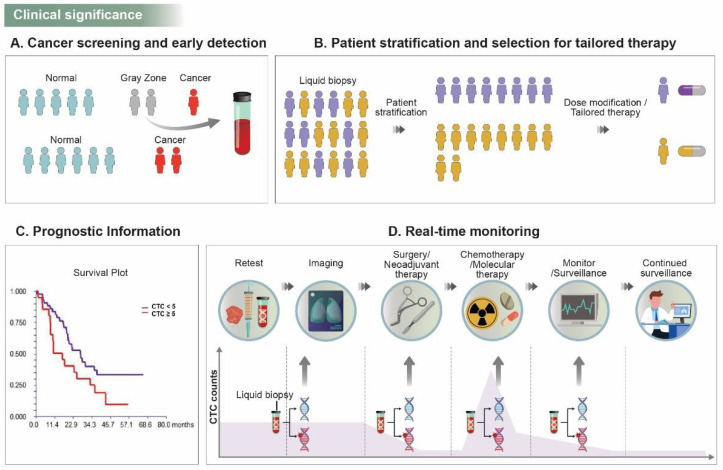Figure 1.
Significance of CTC research in clinical translation. (A) CTCs can help in screening and identifying patients who are predisposed to cancer (represented as gray zone) due to familial history, intermediated expression of cancer-associated markers (such as PSA), or other comorbidities, and thereby prevent overtreatment (overdiagnosis) or undertreatment of patients in gray zone. (B) Patient stratification based on CTC count or CTC expression of clinically targetable markers can improve patient outcomes by altering the therapeutic strategy and developing more personalized therapy decisions. (C) CTC can provide prognostic information on cancer progression or early/late recurrences in different cancer types. (D) CTCs allow for real-time monitoring at different stages of cancer treatment, and combined with conventional radiological/histological information can help in treatment decisions while being a tool for continued surveillance in the DFS period.

